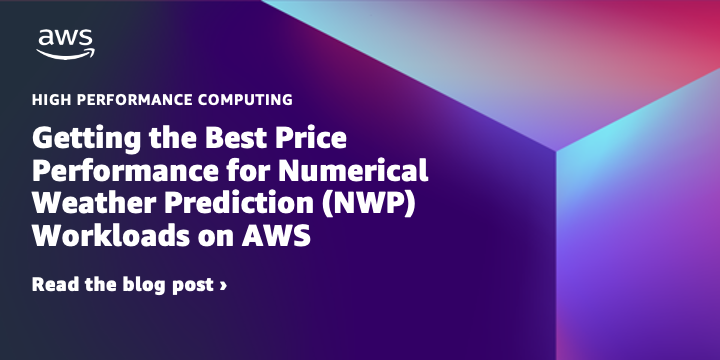AWS HPC Blog
Category: Best Practices
Create a Slurm cluster for semiconductor design with AWS ParallelCluster
If you work in the semiconductor industry with electronic design automation tools and workflows, this guide will help you build an HPC cluster on AWS specifically configured for your needs. It covers AWS ParallelCluster and customizations specifically to cater to EDA.
The plumbing: best-practice infrastructure to facilitate HPC on AWS
If you want to build enterprise-grade HPC on AWS, what’s the best path to get started? Should you create a new AWS account and build from scratch? In this post we’ll walk you through the best practices for getting setup cleanly from the start.
Diving Deeper into Fair-Share Scheduling in AWS Batch
Today we dive into details of AWS Batch fair share policies and show how they affect job placement. You’ll see the result of different share policies, and hear about practical use cases where you can benefit from fair share job queues in Batch.
Automate your clusters by creating self-documenting HPC with AWS ParallelCluster
Today we’re going to show you how you can automate cluster deployment and create self-documenting infrastructure at the same time, which leads to more repeatable results that are easier to manage (and replicate).
Optimizing your AWS Batch architecture for scale with observability dashboards
AWS Batch customers often ask for guidance to optimize their architectures and make their workload to scale rapidly. Here we describe an observability solution that provides insights into your AWS Batch architectures and allows you to optimize them for scale and quickly identify potential throughput bottlenecks for jobs and instances.
Getting the Best Price Performance for Numerical Weather Prediction Workloads on AWS
In this post, we will provide an overview of Numerical Weather Prediction (NWP) workloads, and the AWS HPC-optimized services for it. We’ll test three popular NWP codes: WRF, MPAS, and FV3GFS.
Accelerating Genomics Pipelines Using Intel’s Open Omics Acceleration Framework on AWS
In this blog, we showcase the first version of Open Omics and benchmark three applications that are used in processing NGS data – sequence alignment tools BWA-MEM, minimap2, and single cell ATAC-Seq on Xeon-based Amazon Elastic Compute Cloud (Amazon EC2) Instances.
Building a Scalable Predictive Modeling Framework in AWS – Part 3
In this final part of this three-part blog series on building predictive models at scale in AWS, we will use the synthetic dataset and the models generated in the previous post to showcase the model updating and sensitivity analysis capabilities of the aws-do-pm framework.
Building a Scalable Predictive Modeling Framework in AWS – Part 2
In the first part of this three-part blog series, we introduced the aws-do-pm framework for building predictive models at scale in AWS. In this blog, we showcase a sample application for predicting the life of batteries in a fleet of electric vehicles, using the aws-do-pm framework.
Building a Scalable Predictive Modeling Framework in AWS – Part 1
Predictive models have powered the design and analysis of real-world systems such as jet engines, automobiles, and powerplants for decades. These models are used to provide insights on system performance and to run simulations, at a fraction of the cost compared to experiments with physical hardware. In this first post of three, we described the motivation and general architecture of the open-source aws-do-pm framework project for building predictive models at scale in AWS.








